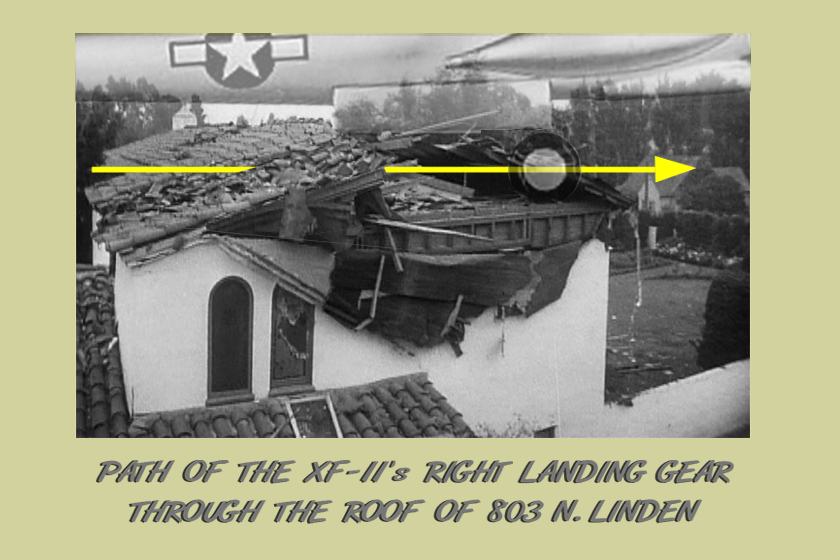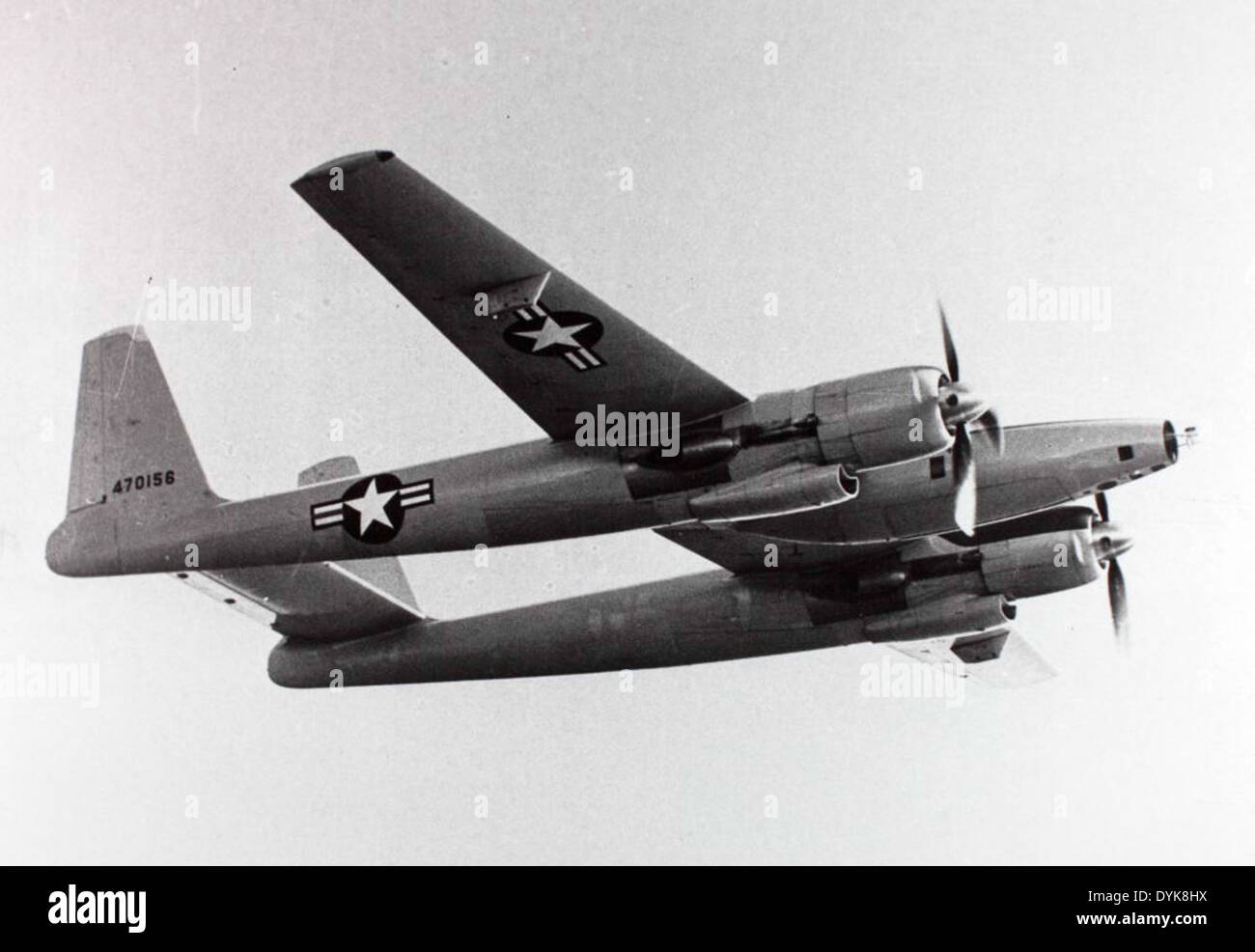

Both had similar long-range photo-reconnaissance capability and were available at a much lower cost. Despite being the better performer the contract for the XF-12 was cancelled, the USAAF opting to order the RB-50 Superfortress, and Northrop F-15 Reporter instead. When the US Army Air Forces (USAAF) evaluated it against the XF-12, testing revealed the XF-11 was harder to fly and maintain and projected that it would to be twice as expensive to build. The aircraft proved stable and controllable at high speed. Hughes survived the crash and despite the fact that the construction contract was by then cancelled completed the second prototype and successfully flew it on 5 April 1947. The first prototype with Hughes at the controls crashed during its first flight in 1946. Each engine drove a pair of contra-rotating four-bladed, controllable-pitch propellers, which can increase performance and stability, at the cost of increased mechanical complexity. It was a tricycle-gear, twin-engine, twin-boom all-metal monoplane with a pressurized central crew nacelle powered by two Pratt & Whitney R-4360-31 28-cylinder radial engines.

In configuration the XF-11 resembled the World War II Lockheed P-38 Lightning, but was much larger and heavier. However, only two prototypes as well as a mock were constructed. Hughes took much of his D-2 design, its twin-boom, twin-engines and relatively small central crew nacelle and began work on a new aircraft, the XF-11. The Army's specifications called for a fast, long-range, high-altitude photographic reconnaissance aircraft. TAM81311 XF11 Japanese Navy Green Flat Acrylic 23ml (3/4oz) Bottle Hobby Paint Tamiya Tamiya acrylic paints are made from water-soluble acrylic resins and. The Army however, didn't like his use of a resin bonded plywood construction but was none the less impressed and they asked Hughes for a high-altitude photographic reconnaissance version built from aluminium. When war broke out he approached the War Department and pitched his plane as a bomber. Development of the D-2 started in great secrecy. Early in 1998, the 2-km asteroid 1997 XF 11 became of interest as a possible danger to the earth because it would clearly pass within-possibly well. During the flight (which was extended to twice the flying time due to Hughes ambition), a hydraulic leak caused the plane to pull to the right.

#XF 11 MOVIE#
Millionaire Howard Hughes, famous aviator, movie producer, and playboy in the 1930's envisioned a super-fast aircraft that could be a long distance recorder breaker. In 1946, Hughes flew his military reconnaissance prototype, the XF-11, for the first time. The Hughes XF-11 was a prototype military reconnaissance aircraft, designed and flown by Howard Hughes and built by Hughes Aircraft for the United States Army Air Forces.


 0 kommentar(er)
0 kommentar(er)
